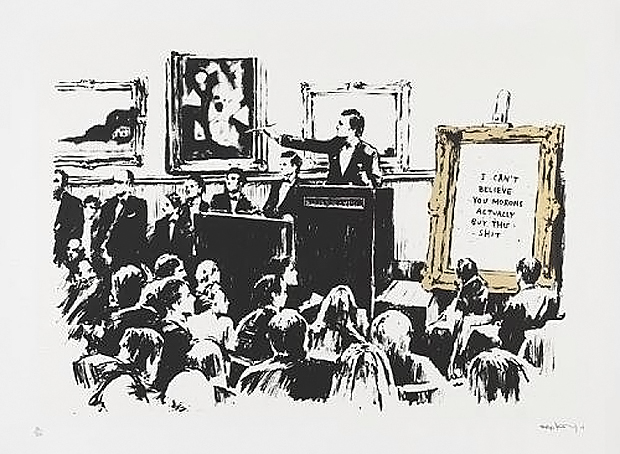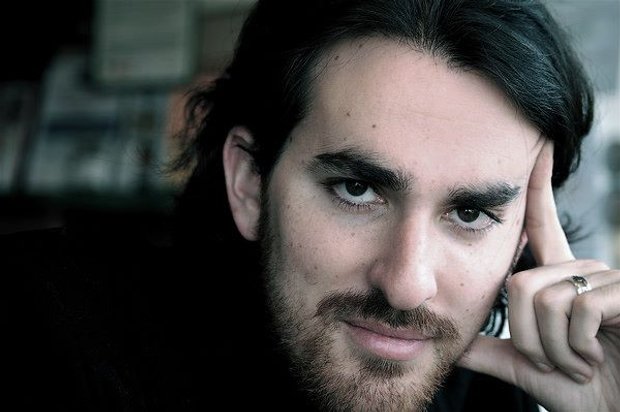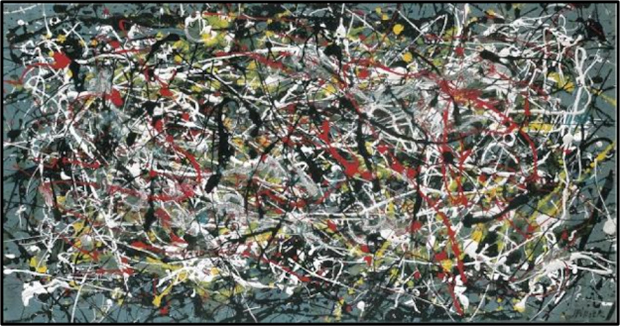
How anyone can fake a Banksy for under 10 dollars
Art forgery expert Noah Charney on how to recreate a forensically identical street-art classic for next to nothing
What does it take to become a world-class art forger or faker? Years of study? A preternatural gift for drawing and painting? An eye for artistic composition? Perhaps, if you want to fake great Renaissance works. However, as Noah Charney the author of our new book The Art of Forgery reveals, some paintings that command five-figure auction prices can be accurately remade for less than $10.
“Banksy is just about the easiest artist to fake,” The Art of Forgery author told us yesterday. “One of my friends, Vernon Rapley, Director of Security at the V&A, and formerly the head of the Metropolitan Police's art and antiques unit carried out a project with some colleagues to see how much it would cost to fake a Banksy.”

Remember, this is an artist whose works were commanding prices of up to £500,000 last summer. However, according to Charney, Rapley and co believe the works can be faithfully reproduced for £6, around $9.
“You could get a stencil made using Photoshop and trace one of the designs," explained Charney. “It’s a piece of cake. If you want to pay me €100 I’ll make you one. Or you can buy one for the market price – it’ll look exactly the same, it’ll be forensically identical.”
While Charney is by no means detracting from the achievements of modern and contemporary artists, he's trying to effectively make the point that it's much harder to fake a Rembrandt than a street-art canvas, or even a 20th century abstract-expressionist work, such as the handful of fakes sold through the now infamous Knoedler Gallery prior to its closure in November 2011.
“It requires less artistic skill or precision to produce something that is abstract,” argues Charney. “It requires a whole other level of artistry to replicate something that is naturalistic.”

Indeed, the difficulty in forging an Old Master doesn’t end there. In order to pass some level of scientific examination, paints, canvasses and other materials manufactured at the same time as the work was supposedly created are required.
“If you want to replicate materials, and few forgers bother to do so, then you need to find those specific materials,” Charney explains. "It's an easy task if all you need is a recently produced canvas, but a much harder job if you need a sixteenth century Italian poplar board, such as the one Leonardo da Vinci used to paint the Mona Lisa.
Ultimately, artistic appreciation comes down to an individual’s tastes. Indeed, would a fake bother most owners and could they even tell?
“With abstract expressionist paintings most people will not be able to spot the difference between a Pollock and a splatter painting made by me," Charney argues. "The question is do you want something on the walls that is authentic.”
And that question of authenticity lies at the heart of Charney’s new book. Whether you want to know how a surrealist painter of softcore erotica become the most successful Vermeer forger, duping the Nazis or how failed artist Shaun Greenhalgh used his parents to sell forgeries to major museums and auction houses for millions The Art of Forgery has it all and more.To discover more about some of the most fantastic fakes and forgeries, preorder The Art of Forgery, here.